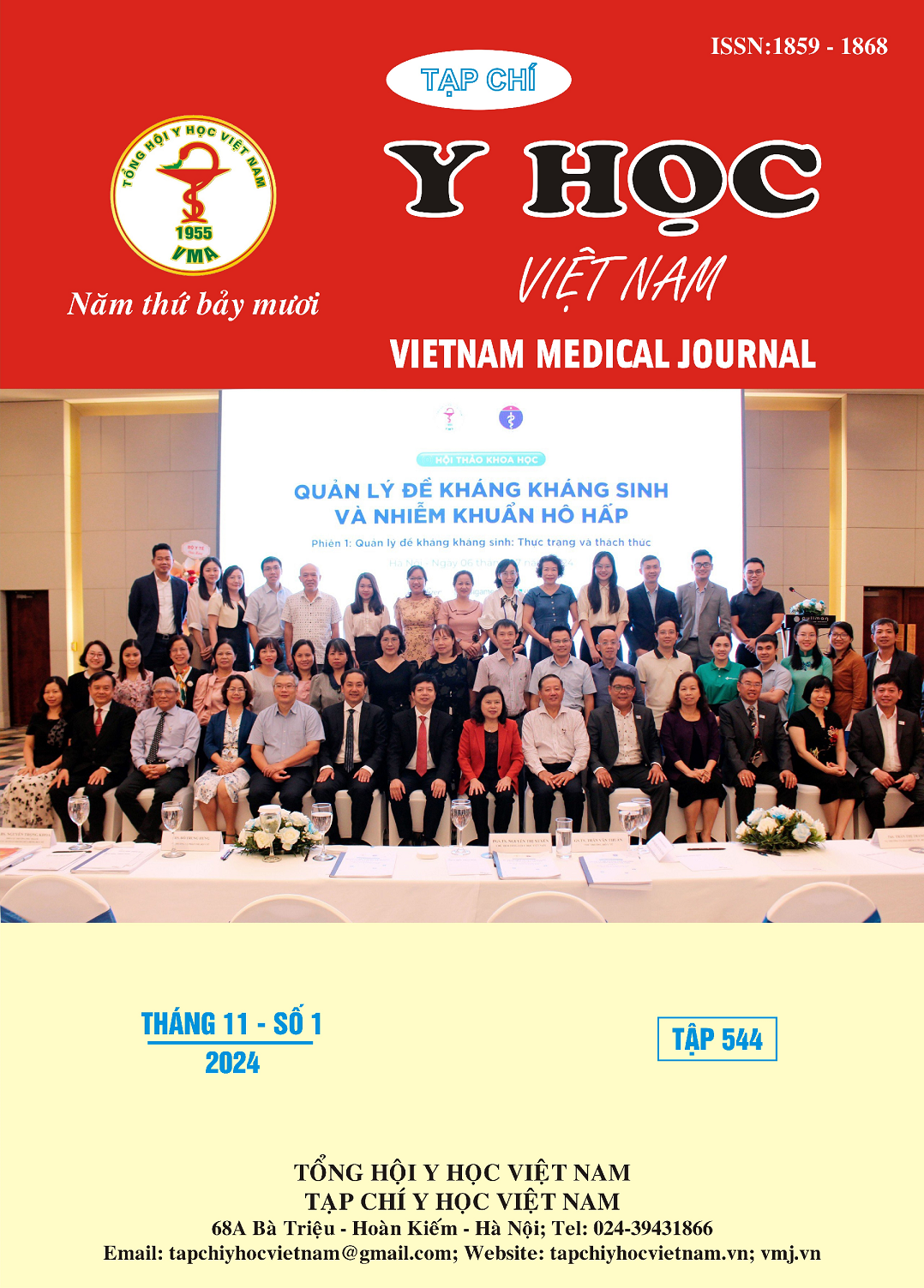CURRENT STATUS AND SOME FACTORS RELATED TO HOSPITAL-ACQUIRED INFECTIONS IN THE INTENSIVE CARE DEPARTMENT OF NGHE AN OBSTETRICS AND PEDIATRICS HOSPITAL IN 2024
Main Article Content
Abstract
Objective: Assessing the current situation of hospital-acquired infections in the Intensive Care Department of Nghe An Obstetrics and Children's Hospital in 2024. Subjects and Methods: Analytical cross-sectional descriptive study. Research on all 306 patients eligible for treatment at the resuscitation department of Nghe An Obstetrics and Pediatrics Hospital from February 1, 2024 to May 30, 2024. Results: Among 306 patients meeting research criteria in 3 intensive care units, the rate of hospital-acquired infections was 10.8%. Of which, the surgical intensive care unit accounts for 17.1%, the neonatal intensive care unit 10%, and the toxicology intensive care unit 7.8%. Hospital pneumonia accounts for 51.2%; bacteremia 31.7%; Surgical wound infection 9.8%; urinary tract infections 4.8% and other infections 2.5%. Bacteria causing hospital infections include Klebsiella (K.pneumoniae, K.aerogenes) 36.6%; P.aeruginosa 22%; Candida fungus (C.albicans, C.pelliculosa) 17.1%; H.influenzae 7.3%; Serratia marcescens, S.aureus and E.cloacae account for 4.9% and E.coli 2.4%. Conclusion: The rate of hospital-acquired infections is 10.8%. Hospital-acquired pneumonia and sepsis account for the highest proportion of hospital-acquired infections. Gram-negative bacteria are the leading causes of hospital-acquired infections, including: Klebsiella (K.pneumoniae, K.aerogenes), P.aeruginosa, H.influenzae, Serratia marcescens E.cloacae and E.coli.
Article Details
Keywords
Nosocomial infections, Intensive Care Unit, Nghe An Obstetrics and Pediatrics Hospital
References
2. Bộ Y tế. Quyết định số 3916/QĐ-BYT ngày 28/8/2017, “Phê duyệt hướng dẫn giám sát nhiễm khuẩn bệnh viện trong các cơ sở khám bệnh, chữa bệnh”.
3. Lương Quốc Hùng, Vũ Hải Vinh, Vũ Đức Định. Thực trạng nhiễm khuẩn bệnh viện tại khoa Hồi sức tích cực bện viện E năm 2014. Tạp chí Y học Việt Nam, 2014. Số đặc biệt (435): 396-405
4. Bùi Thị Hương Giang, Nguyễn Đức Quỳnh. Đặc điểm kháng kháng sinh và các yếu tố nguy cơ tử vong của nhiễm khuẩn bệnh viện tại khoa Hồi sức tích cực Bệnh viện Bạch Mai. Tạp Chí Y học Việt Nam, 2022, 515(1): 19-24.
5. P.T.Hue. Some Risk Factors for Hospital Infections at Emergency Department of Ninh Binh Obstetrics and Pediatrics Hospital. Journal of Pediatric Research and Practice, Vol. 4, No. 5 (2020): 34-41.
6. N.D. Phuc, N.V. Thiet. Status of nosocomial infections at the intensive care unit – Nghe An general friendship hospital in 2022. Vietnam Journal of Community Medicine, Vol. 64, Special Issue (2023): 136-140.
7. Đặng Ngọc Thủy. Nghiên cứu thực trạng nhiễm khuẩn bệnh viện tại Bệnh viện đa khoa khu vực Phúc Yên tỉnh Vĩnh Phúc năm 2019. Luận văn Thạc sỹ, Học viện Khoa học và Công nghệ.2019.
8. Hoàng Tiến Mỹ. Khảo sát các tác nhân vi khuẩn trong các loại nhiễm khuẩn bệnh viện thường gặp tại Bệnh viện Chợ Rẫy - Luận văn, đồ án, luan van, do an [Internet]. [cited 2023 Dec 11]. Available from: https://doan.edu.vn/do-an/khao-sat-cac-tac-nhan-vi-khuan-trong-cac-loai-nhiem-khuan-benh-vien-thuong-gap-tai-benh-vien-cho-ray-54640.
9. Morillo-García Á, Aldana-Espinal JM, Olry de Labry-Lima A, Valencia-Martín R, López-Márquez R, Loscertales-Abril M, et al. Hospital costs associated with nosocomial infections in a pediatric intensive care unit. Gac Sanit. 2015;29(4):282–293.


